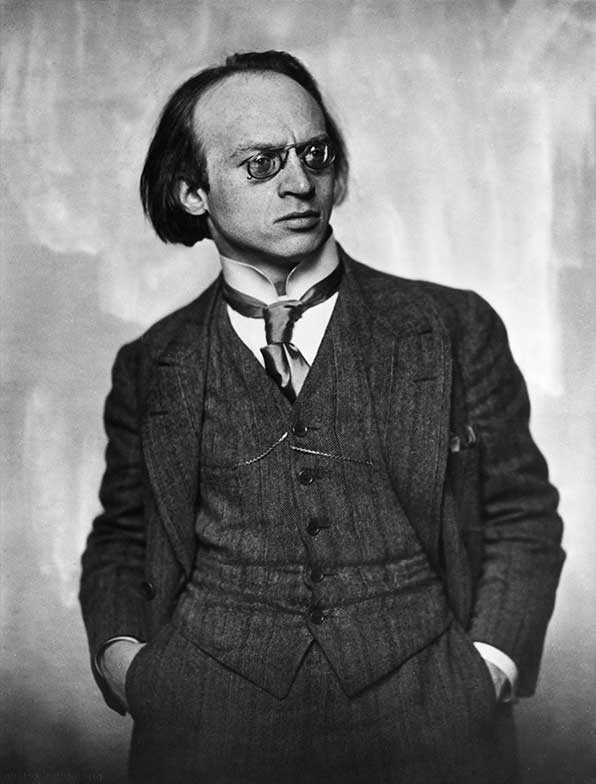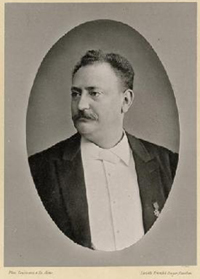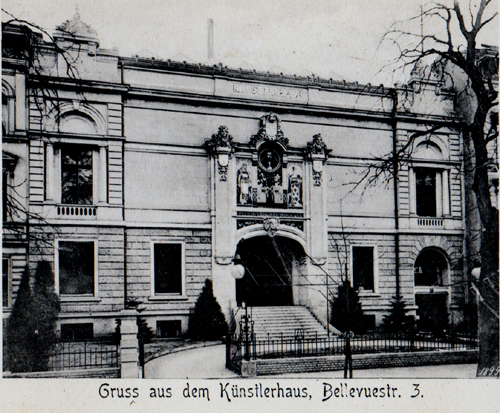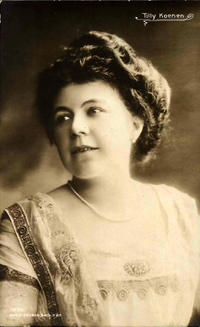
![Main heading: The Music of Gustav Mahler: A Catalogue of Manuscript and Printed Sources [rule] Paul Banks](../../images/General%20Heading3.jpg)
|
|
|||||||||||||||||||||||||||||||||||||||||||
|
|
|||||||||||||||||||||||||||||||||||||||||||
|
|
|||||||||||||||||||||||||||||||||||||||||||
|
|
|||||||||||||||||||||||||||||||||||||||||||
|
|
|||||||||||||||||||||||||||||||||||||||||||
|
|
|||||||||||||||||||||||||||||||||||||||||||
|
|
|||||||||||||||||||||||||||||||||||||||||||
|
|
|
||||||||||||||||||||||||||||||||||||||||||
|
|
|||||||||||||||||||||||||||||||||||||||||||
|
|
|||||||||||||||||||||||||||||||||||||||||||
|
|
|
||||||||||||||||||||||||||||||||||||||||||
|
|
|||||||||||||||||||||||||||||||||||||||||||
|
|
|||||||||||||||||||||||||||||||||||||||||||
|
|
|||||||||||||||||||||||||||||||||||||||||||
|
Index of Works |
|
||||||||||||||||||||||||||||||||||||||||||
|
Site Map |
|
||||||||||||||||||||||||||||||||||||||||||
|
|
|||||||||||||||||||||||||||||||||||||||||||
|
|
|
||||||||||||||||||||||||||||||||||||||||||
|
|
|||||||||||||||||||||||||||||||||||||||||||
|
|
|
||||||||||||||||||||||||||||||||||||||||||
|
|
|
||||||||||||||||||||||||||||||||||||||||||
|
|||||||||||||||||||||||||||||||||||||||||||
Mahler on the performance of his Lieder (1906–7)
In his later years Mahler never appeared in public as a solo pianist, although he did play the the continuo in Mozart operas at the Court Opera and in performances of the Suite he compiled from movements of the Bach Orchestral Overtures. He also, very occasionally, accompanied singers, and the correspondence he had with the author and editor of Der Sturm, Herwarth Walden (1878–1941),¹ and the baritone Johannes Messchaert (1857–1922) in connection with his antepenultimate appearance in such a role² offers insights into his attitudes to significant aspects of the performance of his songs.
The concert with Messchaert, which was was to be the 'XII. Abend des III Jahres' of the Berlin-based Verein der Kunst founded and run by Walden, was eventually given at the Künstlerhaus (Bellevuestraße 3, Berlin) on 14 February 1907, but planning had begun the previous year.³ In April 1906 Mahler telegrammed Walden to indicate when he would be available (whether for a meeting or a telephone call is uncertain) during the week, though the reason for their being in contact is unstated.⁴ Walden again attempted to make contact towards the end of August but Mahler was on vacation until the beginning of September. Nevertheless, by 8 September 1906 Mahler was negotiating a mutually convenient date in either January or February 1907 for the concert: initially the 15 January seemed a strong possibility, but by the end of the month the 14 February seems to have been agreed by Walden and the two artists.
|
|
|
|
Fig. 1a Herwarth Walden |
Fig. 1b Johannes Messchaert |
|
|
|
|
Fig. 1c Kunsterhaus, Bellevuestraße 3, Berlin (c. 1899) |
|
Preferred accompaniment
Mahler's telegramme of 12 September 1906 to Walden indicates that he believed that what they were discussing was a concert that would involve an orchestra, with which he would need two or three rehearsals to prepare. It appears that it was Walden who (probably for financial reasons) proposed to Mahler in late November/early December, that a piano accompaniment would have to suffice for the whole evening;⁵ Mahler's initial response was forthright (RSMLK, letter 10, 494, 496; HLGIII, 600–01; the underlinings are Mahler's):
|
Sie müssen es unbedingt ermöglichen, daß ich den Meschaertabend ein Orchester zur Verfügen habe. Meine Compositionen würden ohne Orchester charakterlos erschienen, denn es ist für Orchester berechnet, und die Behandlung der Instrumente in Verbindung mit der Singstimme ergeben den Styl der Sache. Es wäre ein schwerer Fehler, mit Surrogaten zu bekommen, wenn es gilt, das Verständniß für etwas Neues zu erkämpfen. |
You must somehow arrange that I have an orchestra at my disposal for the Messchaert concert. My compositions would loose their character without an orchestra, since they are intended for orchestra, and the treatment of the instruments in combination with the singing voice is what gives the thing its style. It would be a big mistake to employ substitute means when trying to win understanding for something new. |
Mahler clearly had strong views in the matter, but it is important to note that the earliest indication of the likely recital programme - Messchaert's letter to Walden dated 19 September 1906 (RSMLK, letter 6, 493) - refers only to the Kindertotenlieder (which the singer knew and liked) and the songs with piano accompaniment in vol. 3 of the Lieder und Gesänge (which he did not know). It is certainly possible that programme planning had not extended any further by early December, in which case Mahler's comments should perhaps be understood to apply only to Kindertotenlieder, although it is seems rather likely that he might have made similar arguments in favour of the orchestral versions of the other Rückert settings that were eventually included in the programme. As the concert approached Mahler made final arrangements with Walden and in particular requested a Steinway with a light touch (RSMLK, letter 11, 497).
Transpositions and compass
What appears to be Mahler's earliest surviving letter to Messchaert (ERGMH letter 35) begins by noting that the regrettable lack of an orchestra means that he will be accompanying throughout, offering Messchaert ample opportunity for transpositions:⁵ª
|
Vielen Dank für Ihre lieben Zeilen. – Vor allem die Mittheilung, daß auf die Orchesterbegeleitung (lieder!) verzichtet werden muß, und ich daher den ganzen Abend am Clavier begleiten werde. - Sie haben daher gewünschten Spielraum bezüglich der Transpositionen. Ich bin mit allen Vorschlägen, die Sie im letzten Brief stellen einverstanden. |
Thank you for your esteemed lines. – Above all, the message that the orchestral accompaniment (unfortunately) must be dispensed with, and that therefore I will accompany the whole evening on the piano. - You therefore have [the] desired latitude with respect to the transpositions. I agree with all the suggestions you made in [your] last letter. |
This strongly implies that the singer had proposed (and Mahler approved) the transposition of some or all of the Kindertotenlieder and perhaps some other songs. The possibility that Mahler might have condoned a performance of Kindertotenlieder in which the original tonal relationships between songs were not preserved may be disconcerting, but unless Messchaert's copy of the song-cycle, or other currently unknown source material can be located to prove otherwise, this remains a possibility. It is worth noting that whereas Kahnt, when issuing the high-voice version of Kindertotenlieder in 1915, simply transposed all the songs up a minor third, Weinberger, when issuing a high-voice version of the Lieder eines fahrenden Gesellen in 1921 (and apparently in the absence of any authorisation from the composer) adopted a more creative approach:
|
1. „Wenn mein Schatz Hochzeit macht‟ 2. „Ging heut' Morgen über's Feld 3. „Ich hab' ein glühend' Messer 4. „Die zwei blauen Augen |
Low voice D minor-G minor D major–B major
D minor–E E minor–F minor |
High voice E minor–A minor
E E minor–F minor
F minor–G |
Later in the same letter, Mahler returns to the issue of transpositions, and identifies another means of dealing with troublesome pitches in the vocal part: that he could take them into the piano part. The pitches he has in mind are likely to have been at the extremes of the songs' compass. In some songs among the Lieder eines fahrenden Gesellen, Lieder und Gesänge and Des Knaben Wunderhorn Mahler offered an ossia (in rare cases, two) for a pitch at the extreme of the compass employed, but (apart from Revelge, the first of the Sieben Lieder to be composed), he offers none in Kindertotenlieder or the Sieben Lieder. In his letter Mahler offers to discuss similar ossias in songs from these two later collections with Messchaert. This gesture might be understood as a concession primarily motivated by Mahler's awareness of Messchaert's status as one of the finest proponents of the German Lied of his generation rather than as a signal that he would have wished to encourage a more generally fluid approach to his conceptions: indeed he makes it clear that sometimes a genuinely creative approach to a vocal problem was needed, one which only he could provide.
Music and Text
The continuation of Mahler's response to Messchaert, which follows on directly from the quotation above, makes it clear, that the singer had also suggested a revision to the vocal line in the fourth song:
|
Bloß eine einzige Änderung und zwar in Nro. 4., Kindertotenlieder, ist leider nicht möglich, weil Ihre Melodie nicht im Orchester liegt, das nur eine Nebenstimme dazu spielt. Da es allem Anschiene nach der Vocal e verschuldet, so könnte ich eine Textänderung vorschlagen, wenn es Ihnen recht ist: |
Just a single change in Nro. 4. of the Kindertotenlieder, is unfortunately not possible because your melody is not in the orchestra, which plays only a countermelody. Since it is all due to the vowel 'e', I could suggest a text change, if you are happy with it: |
|
|
|
|
Wie ich sehe, haben Sie bei anderen Stellen wo sie auf demselben Ton den Vocal o singen, keine Bedenken geäußert. Sollte dieß auch nicht gehen, so werde ich auf einen andern Ausweg sinnen. |
I see that in other places where the vowel 'o' is sung on the same pitch, you have not expressed any doubts. If this does not work, I will think of another way out. |
Whatever Messchaert had proposed, Mahler was not satisfied, and re-wrote what was actually his own text in order to preserve a musical point (Mahler's changes in italics):
|
Rückert Sie sind uns nur vorausgegangen, Und werden jezt nicht hier nach Haus verlangen! Wir holen sie ein auf jenen Höh'n Im Sonnenschein, der Tag ist schön.
|
Third Stanza as set (1905) Sie sind uns nur vorausgegangen und werden jezt nicht wieder nach Haus verlangen! Wir holen sie ein auf jenen Höh'n Im Sonnenschein! Der Tag ist schön auf jenen Höh'n |
Revised version (1906) Sie sind uns nur vorausgegangen und werden jezt nicht wieder nach Haus verlangen! Wir holen sie ein auf jenen Höh'n Im Sonnenschein! Der Tag ist schön im Sonnenschein! |
The passage in question concerns the final cadential closure on the tonic in bb. 67–9. The two previous strophes have at the comparable moments (see bb. 19–24 and 42–46) carefully avoided giving the principle melodic material to the voice and indeed, in both passages the vocal line breaks off as if in mid-phrase and, as the parenthetical note that appears only in the piano and voice version makes explicit, is continued by the accompaniment (see figs 1a-c). Only at the end of the song does the voice vocalise the distinctive stepwise cadential descent: any alteration to that line would have undermined the musical (and ultimately expressive) point, that it was only at the end that the protagonist achieves some form of melodic closure.⁶ However, that cadential extension of the vocal phrase required additional text and Mahler had originally expanded Ruckert's last line with the addition of 'auf jenen Höh'n'; the alternative text he proposed to Messchaert might well prove useful to other singers.
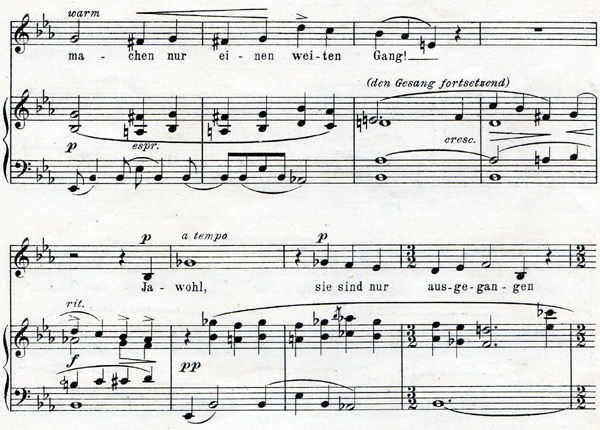
Ex. 1a: bb. 21–26
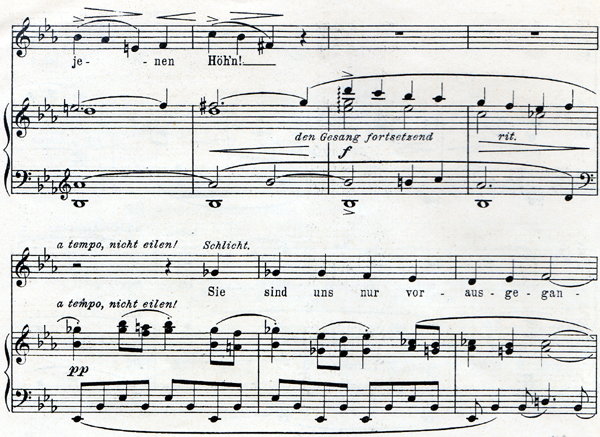
Ex. 1b: bb. 42–48
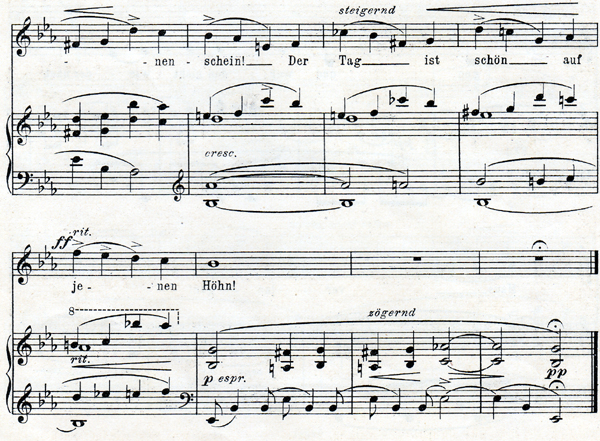
Ex.1c: bb. 64–71
Gustav Mahler: „Oft denk' ich, sie sind nur ausgegangen‟, Kindertotenlieder
(Leipzig: C.F. Kahnt, 1905)
Preferred voice
An issue that needed no discussion in the correspondence was that of choice of singer, but it is worth noting that Mahler always selected male singers for the modest number of performances of his Rückert settings he gave (he never performed „Liebst du um Schönheit‟ in public), and that up to the end of 1906 all performances were by men. Although during the period 1907–1911 the majority of the performances of the Rückert settings from the Sieben Lieder were by men, nearly two-thirds of the performances of Kindertotenlieder were by women and by 1914 the cycle seems to have been primarily associated with the mezzo-soprano voice.
Programming, the audience and programme books
The later stages of the correspondence between singer, pianist/composer and Walden were much concerned with the programme: both its contents and its manufacture. One of the unique features of the published full score and piano-vocal score of Kindertotenlieder was their inclusion (on both the title pages and the front wrappers) of a note that requested that the audience listen to the work in a particular (and presumably unfamiliar) way; at the end of January 1907 Mahler and Messchaert both drew Walden's attention to this and the need for it to be printed in the programme (RSMLK, letter 11, 497–8; letter 12, 498; 500):⁷
|
Die 5 Gesänge sind als eine einheitliches, untrennbares Ganze und es muss daher bei einer Aufführung die Continuität (auch durch Hintanhaltung von Störungen, w.z.B. Beifallsbezeugungen am Ende einer Nummer) aufrecht erhalten werden. |
The 5 songs are conceived as a unified, inseparable whole, and therefore continuity must be sustained during performance, (including by the minimisation of disturbances, such as applause at the end of a number). |
Both performers had further but different suggestions aimed at minimising disturbances. Mahler simply requested that none of the song texts should be printed, but Messchaert was unaware of this, and instead requested that they be printed on noiseless paper ('auf geräuschlosem Papier') and in such a way that page turns during a song would not be necessary; on 6 February he also suggested using a large font.
What is striking about this shared concern for the 'unified, inseparable whole' of the Kindertotenlieder is that it was not reflected in the treatment of the song-cycle that was eventually included in the programme, the Lieder eines fahrenden Gesellen. From Mahler's first surviving letter to Messchaert (ERGMH letter 35 (early December 1906?), 74–5) it is clear that the singer's first repertoire proposal did not refer to Mahler's song cycle, and the composer responded by identifying some additional songs which he found always 'worked':
From the Lieder und Gesänge
Um schlimme Kinder artig zu Machen
„Ich ging mit Lust durch einem grünen Wald‟
Starke Einbildungskraft
Zu Strassburg auf der Schanz
From Des Knaben Wunderhorn
Des Antonius von Padua Fischpredigt
Rheinlegendchen
Das irdische Leben (transposed to D)
Wo die schönen Trompeten blasen
Mahler's next letter (ERGMH letter 36 (December 1906?), 76–7) suggests that Messchaert had supplied a revised list, and that Mahler wished only to propose an ordering and subdivision of the programme. If this reading of the letter is correct, Messchaert had accepted only two of Mahler's recent suggestions (Um schlimme Kinder artig zu Machen and Starke Einbildungskraft) and it was the singer who proposed including two songs, Wenn mein Schatz' and Ich hab' ein glühend' Messer from the Lieder eines fahrenden Gesellen. That the composer accepted without demur the inclusion of only extracts from his song-cycle is consistent with his own performance practice. He only conducted the orchestral version once (in 1896) and before 1907 had never accompanied a complete performance of the voice and piano version; on the other hand he had conducted the second and fourth songs in Vienna on 14 January 1900, and the second song was later heard at three of his concerts in New York and Brooklyn in November 1910. Mahler's performance practice reflects an apparent paradox, that in the 1880s he conceived a song-cycle consisting of a loosely connected group of songs that portrayed experiences that grew out of simple narrative, and that nearly twenty years later the '5 Gesänge' constituted a far more integrated exploration of an inner psychological narrative.
At a late stage, certainly after 28 January when Messchaert sent the long-suffering Walden a 'final' programme (RSMLK, letter 12, 498; 500), it was agreed – on whose initiative it is unclear – that all four songs of the Lieder eines fahrenden Gesellen would be performed.
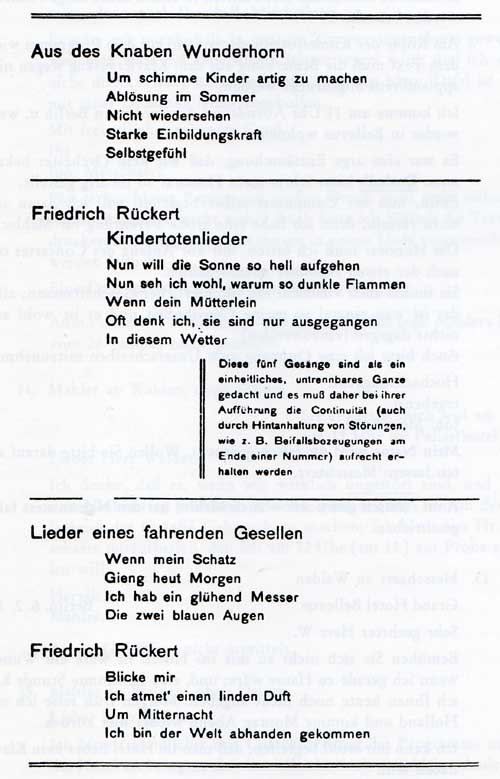
Fig. 2
From the concert programme
Künstlerhaus, Berlin: 14 February 1907
If the report of one member of the audience – Otto Klemperer – is to be believed, it consisted of little more than a hundred people (HLGIII, 603), but given the niche appeal of the programme and the Verein, this was perhaps not surprising.⁸ The event had some coverage in the Berlin press (see HLGIII, 604–5) and one reviewer (Vössische Zeitung) regretted the absence of an orchestra. Paul Bekker, although not yet an admirer of Mahler's music, nevertheless commented (Allgemeine Musik-Zeitung (22.02.1907)):
|
Mahler at the piano is the same as Mahler the conductor. He is extremely precise, and avoids any kind of personality cult. And for this reason he is exciting and stimulating. |
Leopold Schmidt was similarly impressed by Mahler in Kindertotenlieder: 'The masterly rendition of the piano version of the orchestral accompaniments united with Messchaert's perfect singing to produce an unusually powerful and lasting impression.' (Signale für das Musikalische Welt (65/15-16), 258.) Years later, Klemperer recalled that 'Messchaert did not have a large voice, but it was extraordinarily expressive. He really was the Josef Joachim of the voice – nothing less' (HLGIII, 603).
|
_______________________________________________ |
Postscript
The recital that provoked this fascinating exchange could have been the first of many in which Mahler participated. Once discussions were under way it appears that Messchaert, who was also planning a series of three Lieder recitals at the Bösendorfersaal in Vienna on 21, 24 and 28 January 1907, must have asked Mahler, in one of his lost letters from December 1906, whether they could meet on 26 January for a preliminary rehearsal for their Berlin concert. Mahler replied initially that although he would not be in the city, he could make Bruno Walter – who was very familiar with his music, and thoroughly at home with his artistic intentions – available for a consultation (ERGMH letter 37 (undated), 77), but was subsequently able to report that following rearrangements he would be available on 26th, and that other duties permitting, he would be happy to accompany Messchaert in his third recital (ERGMH letter 38 (undated), 78). This was an unprecedented offer by Mahler – which Messchaert was keen to accept⁹ – and one the composer soon regretted.
|
|
|
Fig. 2 Tilly Koenen |
From 9–14 January 1907 Mahler was in Berlin to prepare for a performance of his Third Symphony on the 14th, and on 11th or 12th received an enquiry from the Dutch contralto Tilly Koenen (1873–1941) as to whether he would be willing to accompany her. Unfortunately her letter does not survive, and his reply (ERGMH letter 41 (undated), 80) gives no clues about the event or the repertoire, except that it was to be in Vienna: it therefore presumably referred to the Lieder recital she was to give on 7 February at the Bösendorfersaal.¹⁰ Mahler already knew Koenen, and had conducted a group of orchestral songs she performed at a benefit concert (which also included the local première of his Sixth Symphony) in Munich on 8 November 1906, and later worked again with her in St Petersburg (1907) and New York (1910),¹¹ but her enquiry rang alarm bells with Mahler as he made clear when he forwarded her letter to Alma on 13 January (GMBaA letter 198, 308; GMBaAE letter 197, 259; my own translation is used below):
|
Beilegende Brief bekam ich von der Koenen. In meinem Schreck sagte ich nun dem Meschaert für Wien ab. Denn wohin käme ich, wenn ich nun alle Sänger in ihren Concerten begleiten wollte. |
I received the enclosed letter from Koenen. I was so shaken that I cancelled [my participation in] Messchaert's Vienna recital. Where would I be if every singer wanted me to accompany their concerts? |
Mahler's letters to both Koenen and Messchaert survive,¹² and make the same point, that since taking up his post at the Court Opera he had never appearing as an accompanist in Vienna (which does seem to have been the case), though he was happy to do so in other places. Both are tactful because Mahler wished to preserve a good working relationship with both artists, especially Messchaert, to whom he wrote in complimentary terms (ERGMH letter 42, 80–81; see also HLGIII, 602):
|
Zu meinem größsten Leidwesen muß ich Sie bitten auf meiner Mitwirkung in Wien zu verzichten. Ich muß es Ihnen mündlich bei Ihnen Anwesenheit dort auseinandersetzen welche – sehr kleinischen aber doch allzu triftigen mich zwingen mir dießmal (und nur für Wien) die große Freude zu versagen, mit Ihnen zusammen zu wirken. Nur so viel möchte ich Ihnen andeuten, daß ich mir [!] durch diese Mitwirkung in eine Fülle von persönlichen Unannehmlichkeit[en] verstricken würde, und eine Menge Leute (die Ihnen freilich nicht das Wasser reichen) auf's Tiefste verletzten würde. |
With much regret I must ask you to forgo my participation in Vienna. I must explain in person the reasons, very trivial but all too valid, that oblige me on this occasion (and only in Vienna) to relinquish the great pleasure of working with you. I may only tell you this, that this collaboration would involve me in a host of personal inconveniences and would deeply offend a number of people who cannot hold a candle to you. |
|
Wie Sie sich denken können, treten gerade in Wien eine Menge solcher Ansprüche an mich heran, denen ich principiell immer meinen Widerstand entgegen setzte. – Bei ihnen, dem exceptionellen Meistersinger glaubte ich eine Ausnahme machen zu dürfen. Nun aber hat es sich gezeigt, daß ich dadurch den furor minorum gentium auf[s] Wildeste entfachen würde.... |
As you will appreciate, I receive many such requests in Vienna, and have always resisted them as a matter of principle. In your case, that of an exceptional master of singing, I believed I might be able to make an exception. However, it has become clear that I would thereby arouse the most ferocious furor minorum gentium.... |
|
Und um diesen gordischen Knoten zu zerhauen bitte ich Sie, mich gütigst meiner Zusage zu entbinden. |
And in order to cut this Gordian knot, I must ask you to allow me to retract my promise. |
|
Umso glücklicher werde ich sein, Ihnen in Feber in Berlin zur Verfügung zu stehen, und hoffe, während Ihrer Anwesenheit in Wien unser Berliner Programm durchstudieren zu können.... |
I will be all the happier to be at your disposal in Berlin in February, and hope to be able to work on our Berlin programme during your stay in Vienna.... |
There was further embarrassment in store for Mahler, because he was not even able to attend Messchaert's Bösendorfersaal recital on 28 January (he was conducting Die Entführung aus dem Serail) so Alma had to represent him at the event (ERGMH letter 45, 83). Nevertheless, Koenen continued to work with Mahler and Messchaert continued to sing Mahler's Lieder, so the relationships were not irreparably damaged. Nevertheless, throughout these transactions one is aware that for all his authority within the opera house, Mahler had an acute sense of vulnerability within the wider Viennese milieu and how easily he could become enmeshed in awkward situations.
It may be that in the winter of 1906/7 he was also already aware that he was laying the foundations for a renewed attack on his position at the Opera. As Knud Martner points out (Martner2, xvi-xvii), after his first three seasons in Vienna, Mahler began to spend more time on leave – which had to be approved by the Intendant – promoting his music, and that this reached its peak in the 1906–7 season when he was absent for 65 days. The situation was such that towards the end of 1906 the Intendant had already raised the issue with Mahler (GMBaA, 301; GMBaAE, 251) and on 1 January a strident new campaign against Mahler, in which the appropriateness of such absences figured prominently, was launched in the Viennese press (see HLGIII, 545ff.). To make matters worse, his trip to Berlin departed from his usual pattern of scheduling designed to minimise his time away from Vienna, which entailed travelling by train overnight, beginning rehearsals the day of his arrival, and leaving immediately after the concert. On this occasion he left Vienna on 7 January, eight days before the concert, travelled on to Frankfurt am Main for a concert including the Fourth Symphony on 18 January and then went on to Linz for a concert including his First on 20 January. Such an extended trip could not have been more ill-timed, and exacerbated an already fraught situation.

![]() https://orcid.org/0000-0002-2258-0267
©
2007-21 Paul Banks | This page was lasted edited on
17 February 2022
https://orcid.org/0000-0002-2258-0267
©
2007-21 Paul Banks | This page was lasted edited on
17 February 2022
